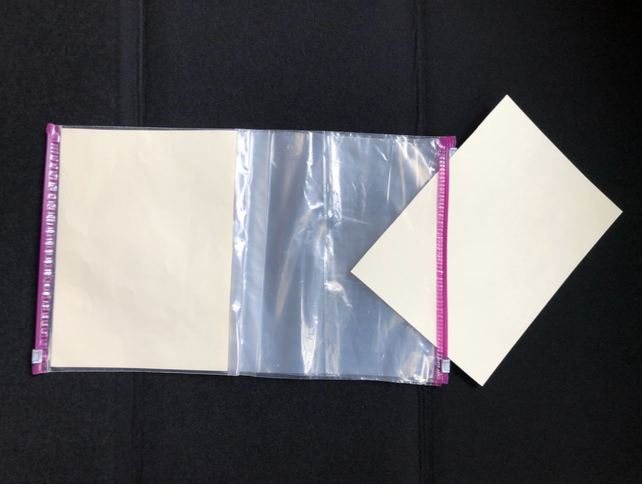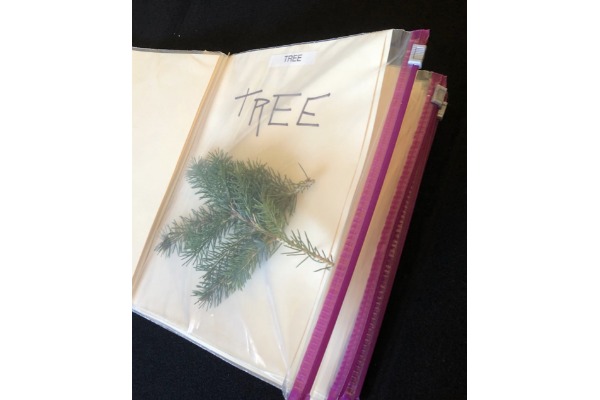Leer en español: Haciendo Tu Propio Libro de Experiencias en Bolsitas.
Baggie Experience Books are a great way to help young children or learners with deafblindness or multiple disabilities to make the transition from real objects to beginning literacy. Begin by collecting items from an actual experience together with the child. It’s best to start with meaningful and fun activities, such as a walk, a meal, a routine, or a special event. After collecting the items, the child can then place the items into individual plastic bags to make a “book”. The child can then review the items and share them with others, as a way to discuss, remember, and share that experience.
Step-by-Step Instructions to Make Your Own Experience Books
- One-gallon expandable bottom bags work well.

- Commercial print is easily removed with nail polish remover.

- “Binding” is the bottom of bags; right side of page is the red slider.

- Can insert heavy paper (10”x 7 ½”) into each bag to act as a visual template and give book pages additional thickness.

- Staple bags together along left side. Student could assist with a switch-activated stapler.

- White Duck Tape is used for the binding. White is not visually distracting.

- Empty Baggie Book ready for objects collected during the experience

- Sample cover. Object or picture could be added to represent “outside”.

- Sample page; leave objects loose in baggie page to allow for interaction.

- Sample page; provide hand-under-hand support for student to write words on pages and even trace around objects with dark marker.

- Sample page

- Multiple Baggie Books can be stored in a plastic bin for easy retrieval to retell the experience in the future.

For related ideas, visit see also:





